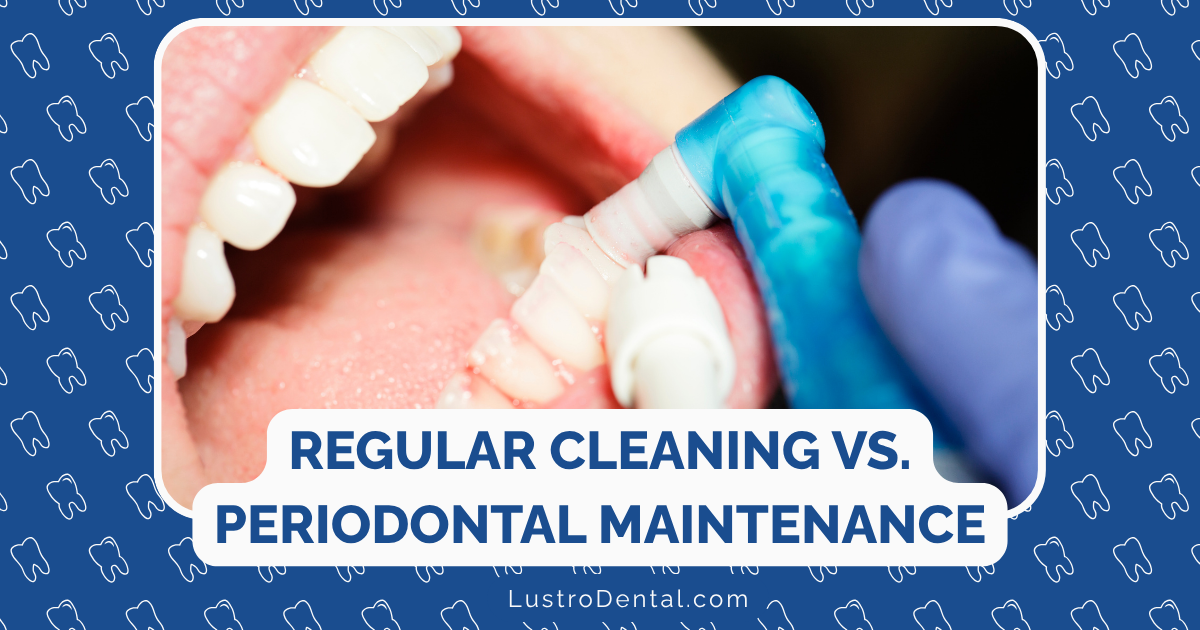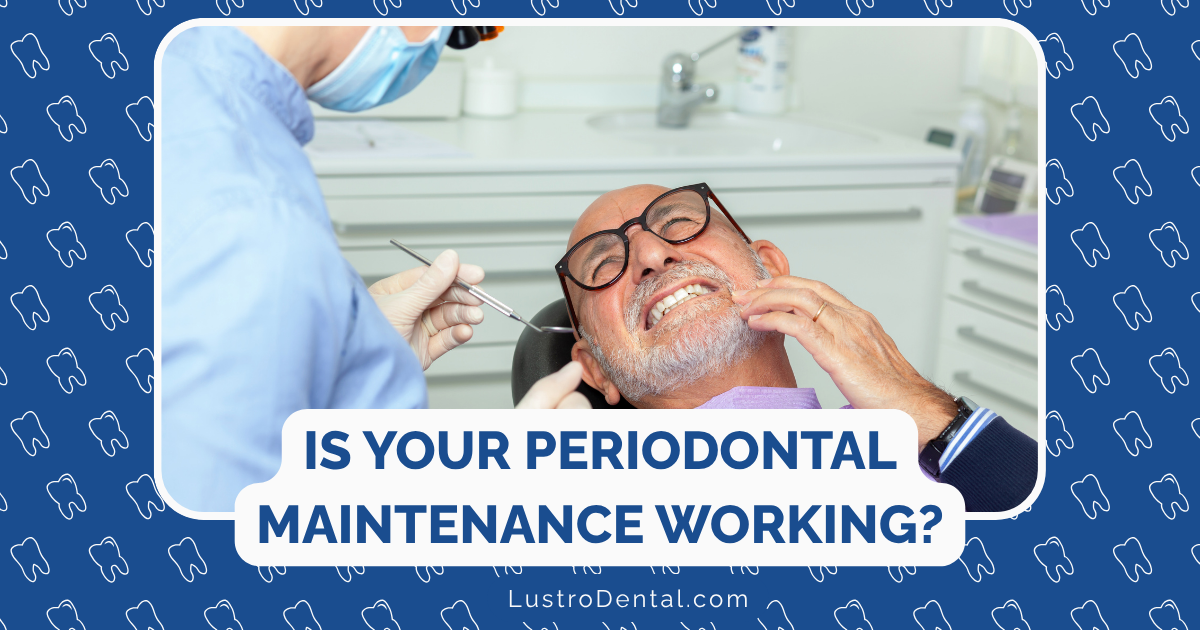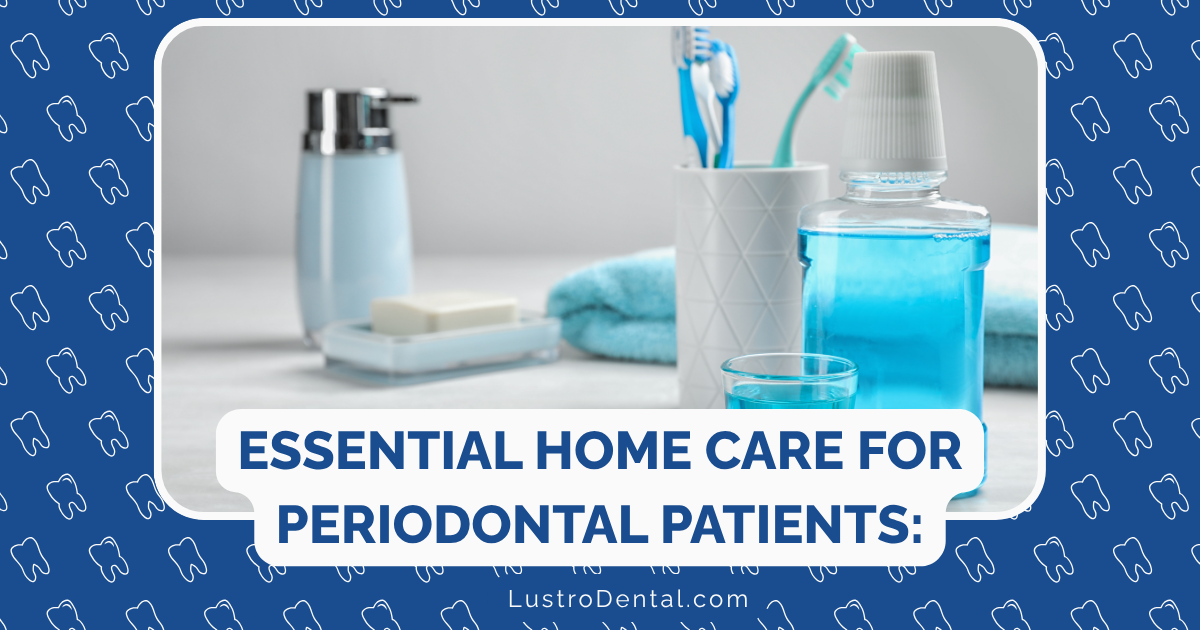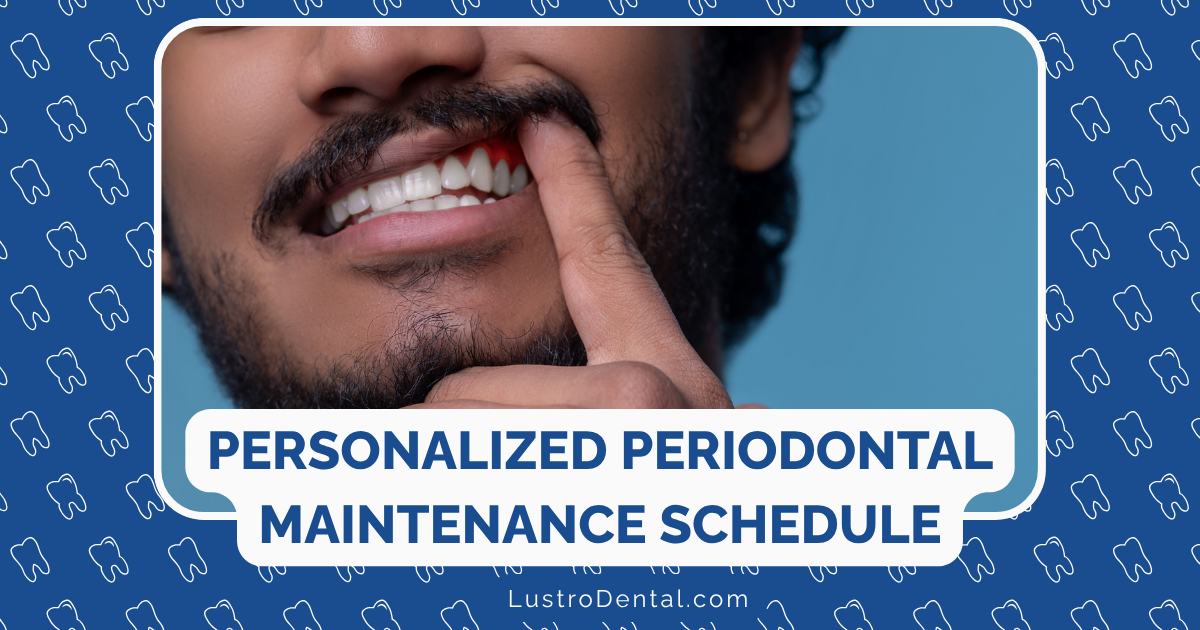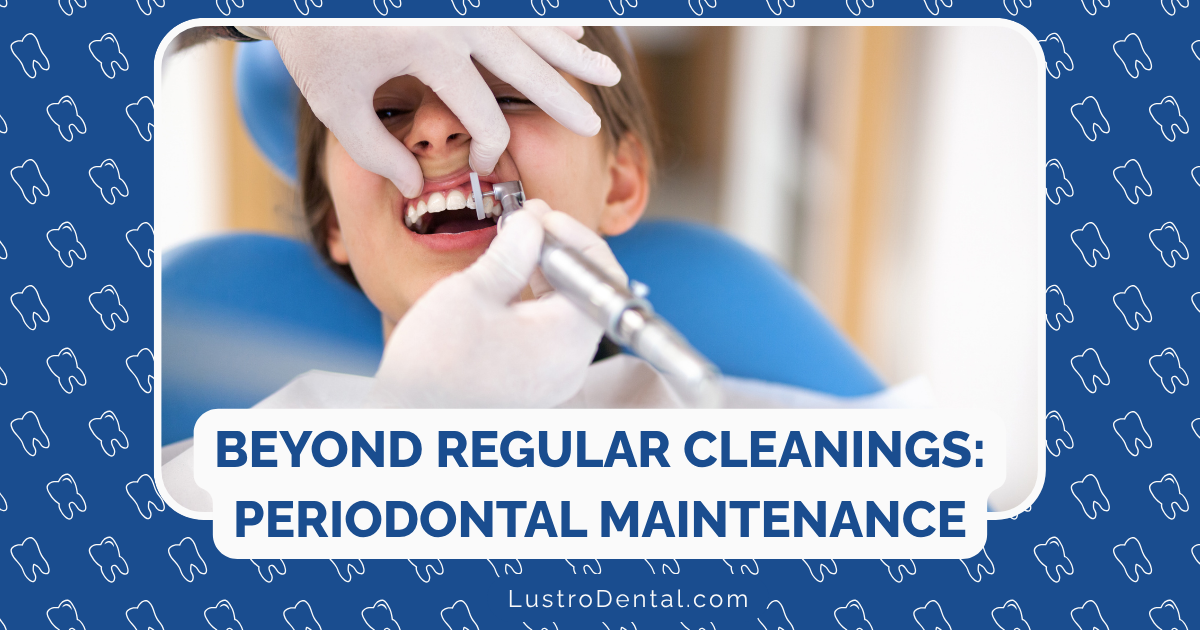The Gingivitis-Hormones Connection: Managing Gum Health During Life Changes
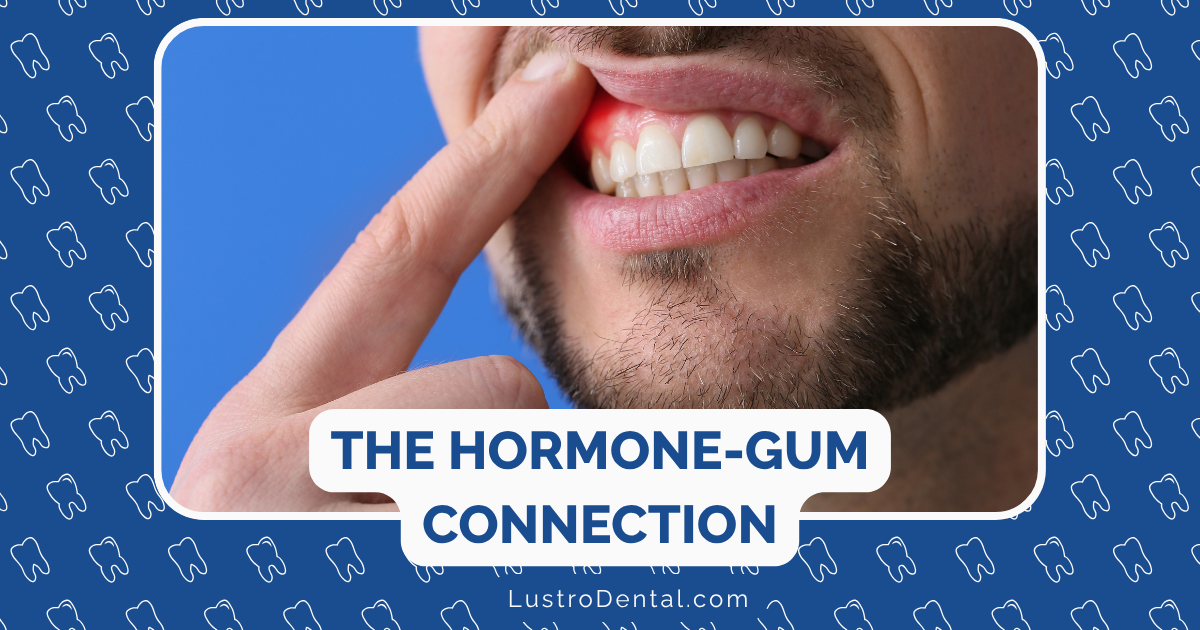
Have you ever noticed your gums becoming more sensitive or prone to bleeding during certain life events? If so, you’re not alone. The connection between hormonal fluctuations and gum health is real, yet surprisingly underrecognized—even by those experiencing it.
In fact, a recent study found that 84% of women over 50 had no idea menopause could affect their oral health, despite 70% reporting new oral symptoms during this transition. This knowledge gap highlights why understanding the relationship between hormones and your gums is crucial for maintaining lifelong oral health.
Why Hormones Affect Your Gums
Our mouths contain countless hormone receptors, particularly for estrogen and progesterone. When these hormone levels fluctuate, they create a cascade of changes in our oral tissues:
- Increased blood flow to the gums, causing swelling and sensitivity
- Enhanced inflammatory response to plaque and bacteria
- Changes in oral microbiome composition
- Alterations in collagen production that can affect gum tissue strength
These biological mechanisms explain why your gums might become more reactive during hormonal shifts—even if your oral hygiene remains consistent.
Key Life Stages and Their Impact on Gum Health
Puberty: When Gingivitis Often Begins
The hormonal rollercoaster of puberty doesn’t just affect mood and skin—it significantly impacts gum health too. Research from the American Academy of Periodontology shows that up to 70% of adolescent girls experience some form of gum inflammation during puberty.
What happens: Surging estrogen and progesterone levels increase blood flow to the gums, making them more sensitive to irritants like plaque. Even minimal plaque can trigger an exaggerated inflammatory response, resulting in red, swollen gums that bleed easily during brushing.
Management strategies:
- Establish consistent brushing and flossing habits
- Consider an electric toothbrush for more effective plaque removal
- Schedule regular dental cleanings every six months
- Address orthodontic issues promptly, as braces can make hygiene more challenging during this sensitive period
Menstrual Cycle: Monthly Fluctuations
Many women experience what dentists call “menstrual gingivitis” in the days leading up to their period. This condition typically resolves once menstruation begins.
What happens: Rising progesterone levels before menstruation can cause:
- Swollen, bright red gums
- Increased bleeding during brushing
- Temporary gum sensitivity
- Occasionally, canker sores inside the cheeks
Management strategies:
- Pay extra attention to oral hygiene during the premenstrual phase
- Use an anti-inflammatory mouthwash containing ingredients like cetylpyridinium chloride
- Consider timing dental appointments for the week after your period when gum sensitivity is typically lower
- Stay hydrated, as dehydration can worsen symptoms
Pregnancy: The Critical Nine Months
Pregnancy brings dramatic hormonal changes that significantly impact oral health. Between 60-75% of expectant mothers develop “pregnancy gingivitis” by their second trimester, according to a comprehensive study published in News Medical.
What happens: Progesterone levels increase tenfold during pregnancy, causing:
- Pronounced gum swelling and tenderness
- Increased bleeding during brushing and flossing
- In some cases, the development of “pregnancy tumors”—non-cancerous growths on the gums that usually resolve after delivery
Why it matters: Research suggests a potential link between periodontal disease during pregnancy and adverse outcomes like preterm birth and low birth weight. While more studies are needed, maintaining gum health during pregnancy is considered an important part of prenatal care.
Management strategies:
- Schedule a dental check-up early in pregnancy
- Consider more frequent cleanings during pregnancy (every 3-4 months)
- Use a soft-bristled toothbrush and gentle technique
- Rinse with salt water to reduce inflammation naturally
- Address any gum issues promptly, as most dental procedures are safe during pregnancy
Menopause: New Challenges for Aging Gums
The hormonal shifts of menopause create unique oral health challenges that often go unrecognized and undiscussed. Only 2% of menopausal women report discussing oral health changes with their dentist, despite the significant impact these changes can have.
What happens: Declining estrogen levels during menopause can cause:
- Dry mouth (xerostomia), which increases cavity and gum disease risk
- Burning mouth syndrome, characterized by painful burning sensations
- Gum recession, exposing more tooth surface to potential decay
- Bone density loss in the jaw, potentially affecting tooth stability
Management strategies:
- Stay well-hydrated and consider saliva substitutes if dry mouth persists
- Ask your dentist about prescription-strength fluoride products to protect teeth
- Consider hormone replacement therapy discussions with your doctor, as some studies suggest it may help maintain oral health
- Use alcohol-free mouthwashes to avoid further drying oral tissues
- Schedule more frequent dental visits to monitor changes and address issues early
Practical Management Strategies for Hormonal Gingivitis
Daily Care Adjustments
Regardless of which hormonal stage you’re experiencing, these fundamental practices help minimize the impact on your gums:
- Optimize your brushing technique:
- Use a soft-bristled toothbrush or electric toothbrush with pressure sensors
- Brush for a full two minutes, twice daily
- Replace your toothbrush every 3 months (or sooner if bristles fray)
- Make flossing non-negotiable:
- Floss daily, using proper technique to clean below the gumline
- Consider floss picks or water flossers if traditional flossing is challenging
- Pay special attention to back teeth, which often harbor more plaque
- Incorporate antimicrobial rinses:
- Use alcohol-free rinses to avoid drying tissues
- Consider products containing cetylpyridinium chloride or essential oils
- Timing matters—use after brushing and flossing for maximum benefit
Dietary Approaches
What you eat significantly impacts how your body responds to hormonal fluctuations:
- Anti-inflammatory foods:
- Omega-3 fatty acids (fatty fish, flaxseeds, walnuts)
- Antioxidant-rich fruits and vegetables
- Green tea, which contains compounds that may reduce gum inflammation
- Calcium and vitamin D:
- Essential for maintaining bone density in the jaw
- Particularly important during pregnancy and menopause
- Sources include dairy products, fortified plant milks, leafy greens, and sunlight exposure
- Limit inflammatory triggers:
- Reduce refined sugars and processed carbohydrates
- Minimize alcohol consumption
- Stay hydrated to support saliva production
Emerging Treatments
Recent research is opening new avenues for managing hormonal gingivitis:
- Targeted probiotics: Research is exploring specific probiotic strains that may help balance the oral microbiome during hormonal fluctuations.
- Anti-senescence therapies: A promising 2025 study from Penn Dental Medicine found that a combination of dasatinib (an enzyme inhibitor) and quercetin (a natural plant compound) reduced markers of inflammation and bone loss in periodontal tissues.
- Personalized treatment protocols: Advances in genetic testing are enabling more personalized approaches to gum disease management based on individual risk factors and inflammatory responses.
- Laser therapy: Gentle laser treatments can reduce gum inflammation with minimal discomfort, potentially offering relief during periods of hormonal sensitivity.
When to Seek Professional Help
While some degree of gum sensitivity during hormonal changes is normal, certain symptoms warrant professional attention:
- Gums that bleed easily with gentle brushing
- Persistent bad breath despite good hygiene
- Receding gums or teeth that appear longer
- Loose or shifting teeth
- Pain or discomfort when chewing
- Pus between teeth and gums
Remember: Early intervention is key to preventing permanent damage to gum tissue and bone.
The Bottom Line: Proactive Management Makes All the Difference
Hormonal fluctuations throughout life will inevitably affect your gum health, but with awareness and proactive care, you can minimize their impact. By understanding the biological mechanisms at work and implementing targeted strategies during each life stage, you can maintain healthy gums despite hormonal challenges.
Most importantly, open communication with your dental care provider about hormonal changes you’re experiencing allows for personalized care approaches that address your specific needs.
Have you noticed changes in your gum health during hormonal transitions? Share your experiences and questions in the comments below!


